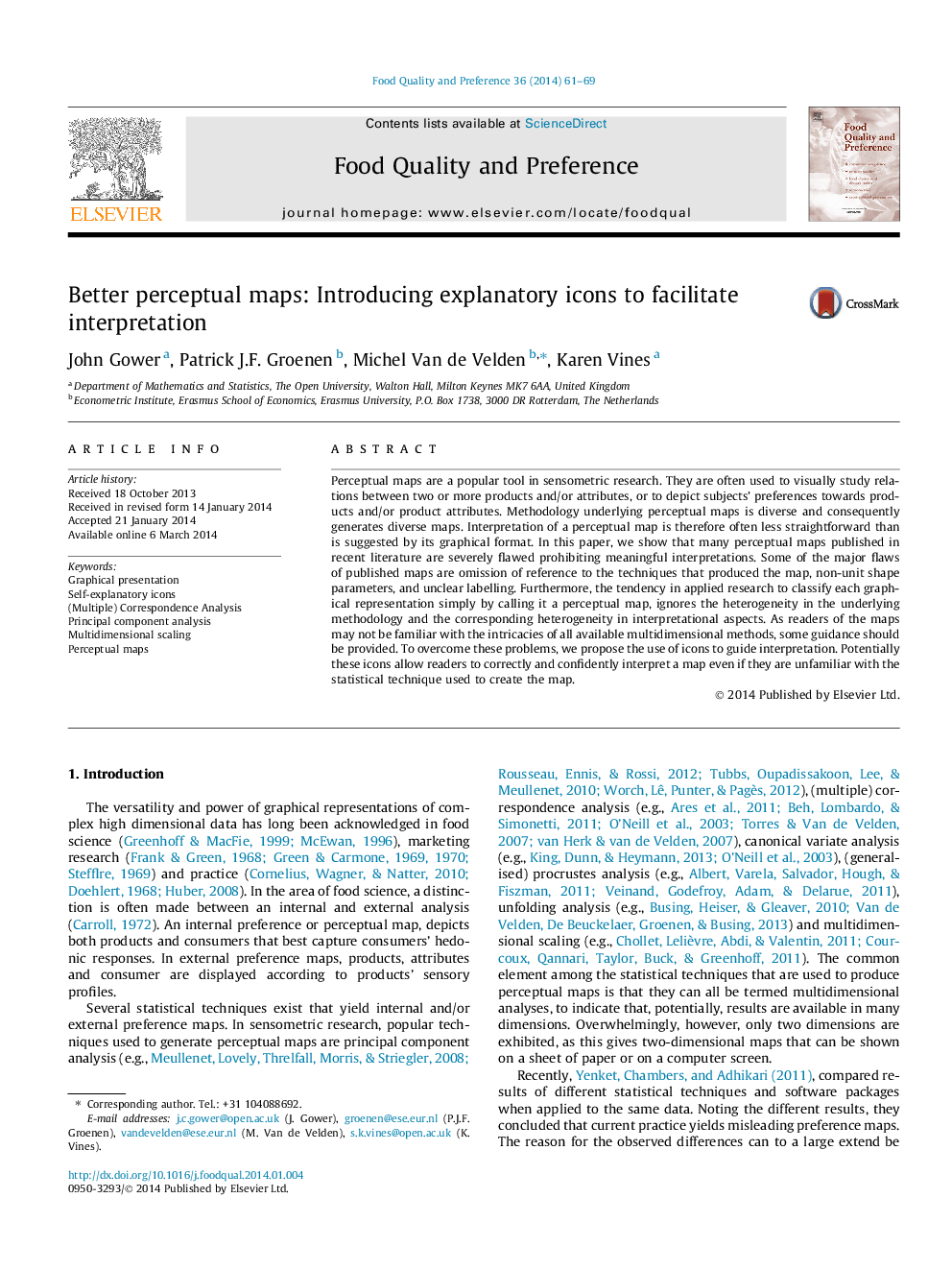| Article ID | Journal | Published Year | Pages | File Type |
|---|---|---|---|---|
| 4317145 | Food Quality and Preference | 2014 | 9 Pages |
•We identify several important flaws in published perceptual maps.•We propose desiderata that address the most prominent and cumbersome flaws.•We propose to improve perceptual maps by using self-explanatory icons.
Perceptual maps are a popular tool in sensometric research. They are often used to visually study relations between two or more products and/or attributes, or to depict subjects’ preferences towards products and/or product attributes. Methodology underlying perceptual maps is diverse and consequently generates diverse maps. Interpretation of a perceptual map is therefore often less straightforward than is suggested by its graphical format. In this paper, we show that many perceptual maps published in recent literature are severely flawed prohibiting meaningful interpretations. Some of the major flaws of published maps are omission of reference to the techniques that produced the map, non-unit shape parameters, and unclear labelling. Furthermore, the tendency in applied research to classify each graphical representation simply by calling it a perceptual map, ignores the heterogeneity in the underlying methodology and the corresponding heterogeneity in interpretational aspects. As readers of the maps may not be familiar with the intricacies of all available multidimensional methods, some guidance should be provided. To overcome these problems, we propose the use of icons to guide interpretation. Potentially these icons allow readers to correctly and confidently interpret a map even if they are unfamiliar with the statistical technique used to create the map.
